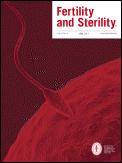
FERTILITY AND STERILITY
Scope & Guideline
Innovating solutions for reproductive challenges.
Introduction
Aims and Scopes
- Assisted Reproductive Technology (ART):
This includes studies on in vitro fertilization (IVF), intracytoplasmic sperm injection (ICSI), and embryo transfer techniques, focusing on optimizing procedures and improving outcomes. - Endometriosis and Uterine Disorders:
Research on the implications of endometriosis, uterine fibroids, and other reproductive disorders on fertility, including surgical and medical management approaches. - Genetic Testing and Preimplantation Genetic Testing (PGT):
Exploration of genetic factors influencing reproductive outcomes, including the use of PGT to assess embryo viability and genetic health. - Socioeconomic and Racial Disparities in Reproductive Health:
Investigating how socioeconomic factors and race/ethnicity impact access to fertility treatments, outcomes, and overall reproductive health. - Mental Health and Infertility:
Examining the psychological impacts of infertility and treatment, including stress, anxiety, and the importance of mental health support in reproductive care. - Innovations in Reproductive Technology:
Highlighting advancements in technology, including artificial intelligence and machine learning applications in fertility treatments and embryo selection.
Trending and Emerging
- Integration of Artificial Intelligence in Reproductive Medicine:
There is a noticeable trend towards incorporating AI for improving embryo selection, predicting outcomes, and personalizing treatment plans. - Focus on Diversity, Equity, and Inclusion in Fertility Research:
Increasing attention is being paid to understanding and addressing disparities in fertility treatment access and outcomes across different racial and ethnic groups. - Sustainability and Environmental Impact on Reproductive Health:
Research linking environmental factors, such as air quality and chemical exposure, to fertility outcomes is gaining prominence as the field recognizes the broader societal impacts on reproductive health. - Mental Health Considerations in Fertility Treatments:
The importance of psychological support and mental health care in fertility treatments is increasingly recognized, leading to a rise in studies addressing this aspect. - Longitudinal Studies on Fertility Preservation:
Emerging research focuses on the long-term outcomes of fertility preservation techniques, particularly in cancer patients and those with genetic disorders.
Declining or Waning
- Traditional Fertility Treatments without Genetic Testing:
With the rise of genetic testing and advanced reproductive technologies, traditional methods of treatment are being examined less frequently, as practitioners and researchers focus on personalized and precision medicine approaches. - Gender-Specific Studies without Broader Context:
Research focusing only on male or female fertility issues in isolation is declining as there is a growing recognition of the importance of understanding reproductive health in a holistic and inclusive manner. - Basic Laboratory Techniques in Sperm Analysis:
As more sophisticated and automated technologies for sperm analysis are developed, basic laboratory techniques are being overshadowed, leading to a decrease in studies focused solely on these older methods.
Similar Journals

Reproduction and Fertility
Exploring the frontiers of fertility science.Reproduction and Fertility is a premier academic journal published by BIOSCIENTIFICA LTD, dedicated to advancing knowledge in the fields of reproductive sciences, obstetrics, gynecology, and related areas. Established with a focus on delivering high-quality research, this journal has quickly ascended in prominence, achieving a commendable Q2 ranking in multiple categories, including Embryology, Obstetrics and Gynecology, Reproductive Medicine, and Urology, as of 2023. With an E-ISSN of 2633-8386, Reproduction and Fertility aims to provide a valuable platform for researchers, professionals, and students alike, offering insights into the latest discoveries and innovations in reproductive health. Although currently not an open-access journal, it remains committed to disseminating important findings that can influence clinical practices and policy-making worldwide. Operating from its headquarters in Bristol, United Kingdom, the journal serves as an essential resource for anyone invested in understanding and improving reproductive health outcomes through rigorous academic research.
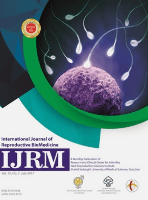
International Journal of Reproductive Biomedicine
Connecting professionals with cutting-edge findings in biomedicine.The International Journal of Reproductive Biomedicine, an esteemed publication by SHAHID SADOUGHI UNIVERSITY OF MEDICAL SCIENCES, serves as a pivotal platform in the fields of obstetrics and gynecology as well as reproductive medicine. Established in 2011 and transitioning to an open access model in 2015, this journal facilitates the dissemination of innovative research and critical findings to a global audience, particularly focusing on advancements in reproductive health and biomedicine. With an impact factor reflective of its commitment to high-quality scientific inquiry, the journal has achieved a notable ranking of Q3 in both its categories for 2023, contributing to its growing influence within the academic community. Researchers and professionals benefit from its broad scope, which encompasses a range of topics essential to reproductive health, thus fostering a rich exchange of knowledge. The journal's accessibility allows students and professionals alike to engage with the latest findings and contribute to ongoing discussions within this vital field of study.

Jornal Brasileiro de Reproducao Assistida
Pioneering insights in obstetrics and gynecology.Jornal Brasileiro de Reprodução Assistida is a prominent academic journal focusing on the latest advancements in reproductive medicine, published by the Sociedade Brasileira de Reprodução Assistida (SBRA). With an ISSN of 1517-5693 and an E-ISSN of 1518-0557, this journal has established itself as a vital resource for researchers, healthcare professionals, and students in the fields of obstetrics and gynecology. Notably recognized within the Q2 category for Obstetrics and Gynecology, it ranks #91 out of 209 in Scopus, placing it in the 56th percentile among its peers. The journal serves as a platform for disseminating innovative research and clinical practices related to assisted reproduction, fostering collaboration and knowledge sharing among professionals in Brazil and beyond. Although currently not an open-access journal, it remains committed to enhancing the scientific discourse in reproductive health, reflecting its vision of supporting advances in healthcare through rigorous peer-reviewed studies. Explore the pivotal contributions made in this field from 2000 to the present, and stay abreast of transformative developments that are shaping reproductive science.
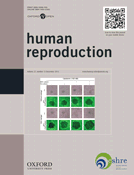
HUMAN REPRODUCTION
Elevating research in obstetrics and gynecology.HUMAN REPRODUCTION is a prestigious academic journal published by Oxford University Press, dedicated to advancing the field of reproductive medicine. With an impressive impact factor highlighting its significance, the journal ranks in the top quartile (Q1) for Obstetrics and Gynecology, Rehabilitation, and Reproductive Medicine, showcasing its crucial role in disseminating high-quality research. Founded in 1986, it has become a key resource for researchers, practitioners, and students interested in cutting-edge developments and innovative practices in human reproduction. Despite not currently offering open access, the journal continues to publish a wealth of peer-reviewed articles that contribute substantially to clinical knowledge and practice. With Scopus rankings placing it among the top journals in its categories, HUMAN REPRODUCTION remains an essential platform for discussion and dissemination of vital findings impacting reproductive health globally.
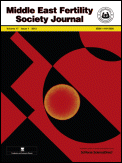
Middle East Fertility Society Journal
Innovating the landscape of fertility science.Middle East Fertility Society Journal is a premier open-access publication established in 1996 that caters to the fields of Obstetrics and Gynecology as well as Reproductive Medicine. Published by SPRINGER in Egypt, this journal has made significant strides in disseminating high-quality research and advancements in reproductive health, achieving a 2023 Scopus rank of #102 in Obstetrics and Gynecology and #47 in Reproductive Medicine, placing it in the 51st and 48th percentiles respectively. With an aim to foster collaboration and innovation in the fertility sector, it welcomes researchers and practitioners to share their findings and insights, contributing to the global discourse on reproductive issues. As an open-access journal since 2010, it ensures that the latest research is readily available to a broad audience, enhancing accessibility and knowledge transfer in the vital area of reproductive health.
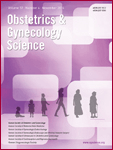
Obstetrics & Gynecology Science
Exploring New Frontiers in Women's Health ScienceObstetrics & Gynecology Science is a premier journal in the field of obstetrics and gynecology, published by the Korean Society of Obstetrics and Gynecology (KSOG). With an ISSN of 2287-8572 and an E-ISSN of 2287-8580, this journal has established a solid reputation for disseminating high-quality research since its transition to an Open Access model in 2010. Situated in South Korea, the journal contributes significantly to the global academic discourse, evidenced by its categorization in Q2 for Obstetrics and Gynecology as of 2023, and its notable Scopus ranking of #75 out of 209 in the Medicine category, reflecting a commendable 64th percentile ranking. The scope of the journal covers diverse research areas relevant to both established practitioners and emerging scholars, aiming to foster innovation and knowledge transfer in women's health. As the journal converges its focus from 2017 to 2024, it continues to be an essential resource for researchers, healthcare professionals, and students dedicated to advancing their understanding and practice in this vital field of medicine.
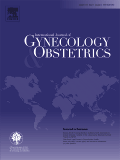
INTERNATIONAL JOURNAL OF GYNECOLOGY & OBSTETRICS
Pioneering Innovations in Women's Health CareThe INTERNATIONAL JOURNAL OF GYNECOLOGY & OBSTETRICS, published by Wiley, stands as a prestigious and influential resource in the fields of medicine and obstetrics and gynecology. With its ISSN 0020-7292 and E-ISSN 1879-3479, this journal has been at the forefront of scholarly communication since its inception in 1973, extending its reach and impact through to 2024. Ranked in the Q1 quartile in both medicine miscellaneous and obstetrics and gynecology, and positioned impressively at 39th out of 209 in the Scopus rankings, the journal is renowned for its rigorous peer-reviewed articles that advance the understanding and practice of gynecological and obstetric health. The importance of this journal is underscored by its role in disseminating cutting-edge research and fostering innovation in clinical practices, making it an essential reading for researchers, healthcare professionals, and students alike. While it does not offer open access, its robust subscription model ensures a wealth of valuable information is accessible to those dedicated to improving women's health globally.

International Journal of Fertility & Sterility
Advancing the Frontiers of Reproductive HealthThe International Journal of Fertility & Sterility, published by ROYAN Institute, is a leading academic platform dedicated to advancing knowledge in the fields of obstetrics, gynecology, and reproductive medicine. With an ISSN of 2008-076X and an E-ISSN of 2008-0778, this Open Access journal has been making significant contributions to the scientific community since its inception in 2007. Based in Tehran, Iran, the journal showcases rigorous research and promotes interdisciplinary collaboration, addressing critical topics related to fertility, sterility, and reproductive health. As of 2023, it holds an impressive Q2 ranking in Obstetrics and Gynecology and a Q3 ranking in Reproductive Medicine, underscoring its relevance and impact in the academic sphere, with Scopus ranks placing it at #67 in Obstetrics and Gynecology and #32 in Reproductive Medicine. The journal's commitment to accessibility and quality is reflected in its global readership, making it an essential resource for researchers, healthcare professionals, and students seeking to enhance their understanding of fertility issues and reproductive technologies.

Gynecologie Obstetrique Fertilite & Senologie
Elevating knowledge in fertility and women's health.Gynecologie Obstetrique Fertilite & Senologie, published by ELSEVIER FRANCE-EDITIONS SCIENTIFIQUES MEDICALES ELSEVIER, serves as a crucial resource for researchers and practitioners in the fields of obstetrics, gynecology, and reproductive medicine. Established in 2017 and continuing through 2024, this journal provides a platform for the dissemination of impactful research, evidenced by its placement in the Q3 category for both obstetrics and gynecology and reproductive medicine in 2023. Although it currently does not operate under an open-access model, the journal is committed to advancing knowledge and practice in women's health and reproductive issues, ensuring that professionals stay at the forefront of scientific developments. With an ISSN of 2468-7197 and an E-ISSN of 2468-7189, the journal not only supports the global medical community from its base in France but also contributes to the broader academic discourse on critical topics such as fertility and women's health. As researchers and professionals in the field seek to enhance their understanding and impact, Gynecologie Obstetrique Fertilite & Senologie remains an essential publication for quality research and innovative solutions in women’s health.

Clinica e Investigacion en Ginecologia y Obstetricia
Fostering Dialogue for a Healthier FutureClinica e Investigacion en Ginecologia y Obstetricia, published by ELSEVIER ESPANA, serves as a prominent platform for researchers and professionals dedicated to advancing the fields of obstetrics, gynecology, and reproductive medicine. Established in 1976, this journal provides a valuable repository of knowledge, publishing original research and critical reviews that contribute significantly to the scientific community. Despite its current classification in the Q4 quartile of the Scopus rankings, it offers essential insights into contemporary clinical issues and emerging trends, relevant for both seasoned researchers and students alike. While the journal is not open access, its content remains crucial for understanding the evolving landscape of women's health. As it continues to operate until 2025, Clinica e Investigacion en Ginecologia y Obstetricia is dedicated to fostering dialog and discovery in vital healthcare practices, growing its readership and impact within the medical field.